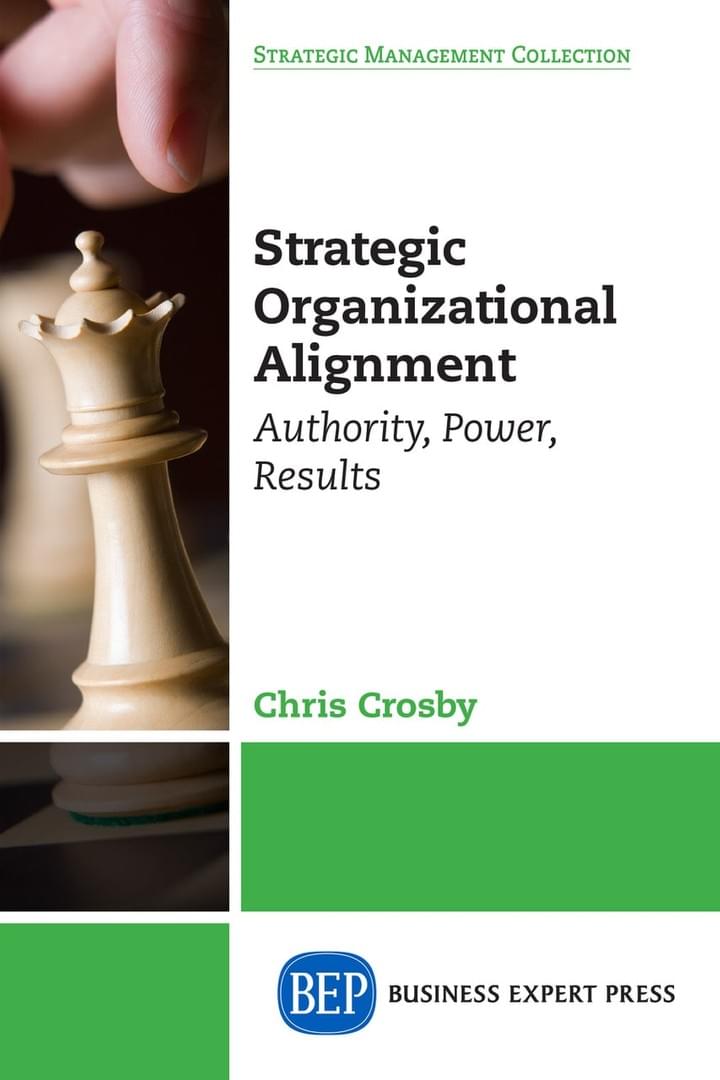
Chris Crosby
Anything is possible when the left hand understands what the right hand is doing.
Alignment is obtainable
Organizational alignment results in improved outcomes.
Welcome,
I assume you are here for a reason? Perhaps you want to learn about practical ways to help organizations? Or maybe you are struggling to achieve results and need help finding a different way?
Whether you have failing projects, dysfunctional silos, decreasing productivity, conflicts on the rise, or you just can’t seem to crack the code of turning the organization around, you are at the right place.
Why? Because I look at organizations through a unique systemic approach that overcomes barriers and reaches business results. I am grounded in core processes, yet everything I do is customized to suit your needs. Not only that, I develop partnerships that are profound and specific to your organization. Then, I impart knowledge along the way so that when I leave you can carry on the work.
At the forefront of what I do is the realization that each organization has unique ROI challenges that require individualized strategies. However, my experience has validated that most companies faced with change have a lot in common. Whether you are working on an impending merger, developing cross-functional processes or projects, conducting a department redesign or an entire system transformation, you will all see increased movement toward your goals when you:
- Establish alignment around measurable goals, through dialogue with leaders and staff, and create actions to overcome the issues in the way of those goals.
- Clarify inputs and outputs by determining what individual leaders and staff members need to give and receive to accomplish the goals.
- Learn from the past by ensuring each intact workgroup understands their part in past problems and achievements to realize improved effectiveness moving forward.
- Stay focused on results by helping leaders to stay focused on the end game and not get sidetracked by events that happen along the way.
Want to learn more? Lets talk about your situation!
Case Studies
Learn more through these real life examples
The following examples illustrate how becoming more effective depends on goal clarity and the necessity of connecting all systems (departments) within the organization. Feel free to ask me to go more specifically into each case, and others not listed here.

Research & Design Group - Project Management Culture Change
(International packaging company)
Situation:
About to lose significant market share due to lack of ability to complete new R & D projects.
Challenges:
Conflicts, goal confusion, silos between departments, lack of decision making clarity and a cumbersome toll gate process created analysis paralysis and unclear accountability.
Actions:
Stakeholders took part in experiential based training to improve their conflict skills, including recognizing and raising core systemic issues (i.e. lack of clear goals, competing priorities, and unclear cross group decision making).
Additional actions included:
- Utilization of a two day interactive process at the onset of each project designed to:
- Foresee and clarify potential project issues and create effective solutions to resolve them.
- Create a project timeline by the people working on the project.
- Plan for how to overcome each critical decision point.
- Clarity of accountability to a single point for each task and decision point.
- Creation of follow-up structures to ensure effective monitoring and proactive resolution of emerging issues.
Results:
The company successfully implemented 6 R&D projects in one year, up from zero the previous year, resulting in increased market share and positive movement toward growth goals.

Manufacturing Plant Transformation
Situation:
A manufacturing plant with overall declining production numbers worked unsuccessfully for years to implement lean manufacturing, - resulting in lost business/shipments to international competitors.
Challenges:
Many strong willed, but un-aligned employees, under performing work groups and unclear initiatives created distractions and lack of direction.
Actions:
Delivered an interactive goal alignment process with the plant manager and his lead team and cascaded it to each work group in order to clarify the overall plant goals, each work group’s goals, and the work processes that must be improved in order to achieve those goals. Part of the process included the employees raising the issues that need to be solved in order to achieve the goals.
A critical mass of employees participated in an experiential based training to increase their EQ, interactive skills and conflict skills. The training including recognizing and raising core systemic issues (i.e. lack of clear goals, competing priorities, and unclear cross group decision making).
Additional actions:
- Leaders, with employee collaboration, reduced plant initiatives (including lean manufacturing) to only focus on those critical to achieving the plant goals, that could be implemented with quality based on their resource constraints.
- Initiation of a new third party managed conflict resolution policy.
- A plant manager instigated policy transitioning all new leaders through a facilitated work group session aimed at ensuring effective, accelerated working relations during leadership transitions.
Results:
In two years the plant achieved:
- Lost Work Day rate from 0.25 to 0.
- Total Recordable Rate from 3.73 to 1.58.
- First pass scrap from 6.43 to 2.70.
- Output per employee from 2983 to 3559.
- Complaints from 3.2 to 1.2.
- Yearly claims in dollar amount from $4,000,000 to 79,000.

International IT Implementation
Situation:
After a mandated ERP implementation to all of its 20 business units (BU), the first wave led to overall unacceptable results with one BU missing 50% of promised ship dates.
Challenges:
Our BU had not implemented an ERP system in many years. No formal implementation structures were in place to manage a large scale implementation. The IT leaders at time of implementation believed that the end users needed to be “sold” and that the employees had to live with no changes whatsoever.
Actions:
The Business Unit President was coached to do two things. One, inform her leaders to the critical importance of the project. Two, ensure that the implementation team used effective project structures giving voice to the end users by capturing all their issues with the software and resolving them methodically. Beyond that, implementation structures were clarified in the layers between the end users and top leadership.
Some actions included:
- Implementation structures created in the form of a regional lead team, plant representatives, functional area representatives, and from 30-70% of end users depending on work function.
- Creation of an software issue resolution process to ensure ensured effective decision making was facilitated by the IT project leadership but made by business leaders.
- A typical IT project plan was used combined with a not so typical decision process as to whether the project could move from each stage (process playback, conference room pilot, user acceptance training, go-live).
- The project leadership was coached to inform and educate rather than sell, ensuring leaders over the end users knew the specific time commitments of their people and were able to engage in creative ways to overcome the difficult time commitments related expected changes.
Results:
Over a 4 year span, BU went live in 29 locations spanning North America, Central America, and Europe - missing zero shipments. Years later the same process was successfully used to concurrently implement simultaneously and successfully in four Asian countries.

Spare Parts Improvement Challenge
Situation:
A manufacturing plant was losing 7 million in sales of spare parts due to a 45% on time delivery rate.
Challenges:
With little input from the workforce, and no effort to address the root cause, the managers tried unsuccessfully to solve the problems. Due to an inability to reach the past success rates, leadership’s lack of confidence resulted in them setting a low goal of 70% on time delivery.
Actions:
Managers aligned to solve the problem by utilizing a joint manager and worker driven plan, giving voice to the workers to better connect the order takers, producers and shippers. The knowledge learned by the utilizing the workers included:
- The inside sales person identified had no one to determine status of orders and would often not be able to obtain answers to critical questions.
- The person creating the parts had no access to putting parts in the computer and instead the parts were put on a shelf or in the system and not cataloged.
Armed with that knowledge, we developed and implemented a connected, clarified improvement process.
Results:
Once the real issues were clarified, employees developed simple solutions that included real time uploading, better warehouse locators, clear single points of accountability and service standards for inquiries. Within two months the plant increased their on-time delivery to 95% and within several months they had captured over 7 million dollars in sales.
Books
Strategic Organizational Alignment and Strategic Engagement Volumes I and II
Gain in-depth understanding of my principles and approach
Summary:
David L. Bradford, Emeritus at Stanford University Graduate School of Business, the Eugene D. O'Kelly II Senior Lecturer in Leadership; and co-author of the best selling book, Power Up: Transforming Organizations Through Shared Leadership:
"Strategic Organizational Alignment is an important book that every leader should read. Rather than giving simple solutions or a fancy new model, Crosby recognizes that sustained performance is achieved by attention to the basics. He shows how challenging that is and then provides detailed actions that truly align the organization. This is not for the faint-hearted, but for the leader who truly seeks excellence."
Business results, major change, project initiatives can be achieved more easily than imagined. Strategic Organizational Alignment shows you how and points out the reasons why most excuses businesses make for inadequate implementations are wrong. Crosby shows you a simple, profound, and repeatable way to ensure your business aligns its employees and has a clear path to success.
Summary:
“I have an extensive collection of business books, and this is a real gem. I started my last two CEO positions with transition sessions as outlined in this collection, led by Chris. In this book are activities that I have used to reach record results.”
—Brian Bauerbach, President & CEO, Mold Rite Plastics
Gallup’s State of the American Workplace showed that workplaces that are actively engaged outperform workplaces that are disengaged in every measure. Crosby’s two-volume set contains eight activities that create an engaged workplace and improve results.
Volume One, The Core Activities, starts with an overview and a chapter on building an engagement strategy to break long- standing dysfunction. Crosby then provides chapters on various conflict resolutions, transition meetings, and work group development.
Summary:
“An immensely practical book that will help people create organizations that get results. Chris has organized this into an easy-to-understand guide. Executives should read it with no less reverence than they would read their company’s financial report.”—Ethan Schutz, President & CEO, The Schutz Company
Gallup’s State of the American Workplace showed that workplaces that are actively engaged outperform workplaces that are disengaged in every measure. Crosby’s two-volume set contains eight activities that create an engaged workplace and improve results.
Volume Two, System-wide Activities, starts with a chapter on implementation competency, then follows with chapters on group-to-group conflict, goal alignment, process improvement, and project planning. Finally, the appendices contain the materials required for each activity.
The Blog
Recent Posts
March 8, 2020Plant Manager: “OK, for a change this large we must appoint good Sponsors!” Consultant: "No, Joe, you don’t appoint Sponsors; they already exist. You identify them and create a plan to get them in alignment.” Plant Manager: "Wow, I have been missing that point. No wonder some of those major...November 14, 2019As a young Organization Development professional, I stumbled upon a Research and Design group that was struggling to complete projects that launch new products. The business unit was at risk of losing market share. I had just learned a project planning process, created by Robert P Crosby, so I...March 8, 2019All workplaces are trying to achieve goals. To align goals effectively, use a process that ensures dialogue with each intact work group (boss and direct reports) to 1) sharpen your organization’s measurable goals, 2) align your employees, 3) ensure each employee understands their purpose and...About

Chris Crosby
Consultant, Author, President of a Non-Profit Board
When internal, Chris helped multiple Alcoa locations meet or exceed their business metrics. Now he supports leaders in diverse industries clarify challenges and implement. He is adjunct at Gonzaga and has extensive international experience.
His work at Alcoa CSI led to a multitude of successful projects including R&D and a global ERP implementation. He continues to guide organizations through culture change with a business metric focus that gets record results by utilizing a variety of models, methods and strategies.
Chris is grounded in applied behavioral science with an eye towards emotional intelligence (EQ). He produces unique leadership programs and trains internal OD departments in the tools needed to transform organizations.
Also, he is the President of the Leadership Institute of Seattle (LIOS.org). Chris has led a reboot of LIOS that will start with a Master of Science in Leadership, Management and Organization Development. This time LIOS will return as an independent college.
Education
- Leadership Institute of Seattle, Bastyr University, Master of Applied Behavioral Sciences, System Counseling Track
- Leadership Institute of Seattle, Bastyr University, Master of Applied Behavioral Sciences, Managing and Consulting Track
- The Ohio State University, Bachelor of Science, Social Studies Education
Partial Client List
- Alcoa (Baden, Indianapolis, Tennessee, Crawfordsville, Warrick, Richmond, Pittsburgh, Wenatchee, Klaner)
- Alcoa International (Wales, UK, Germany, Spain, Hungary, Costa Rica, Mexico, Egypt, Nepal)
- Boeing
- Bonnell Aluminum
- CST Industries, Inc.
- Entergy Nuclear
- JAMALCO (Kingston, Jamaica)
- JML Steel
- Kinsale Holdings, Inc
- Mold Rite Plastics
- Portola Packaging
- Samish Indian Nation
- Sound Transit
- Staffing Association of Washington
- Starbucks
- The Asian Development Bank
- Treehouse for Kids
Contact
© 2017, Chris Crosby







